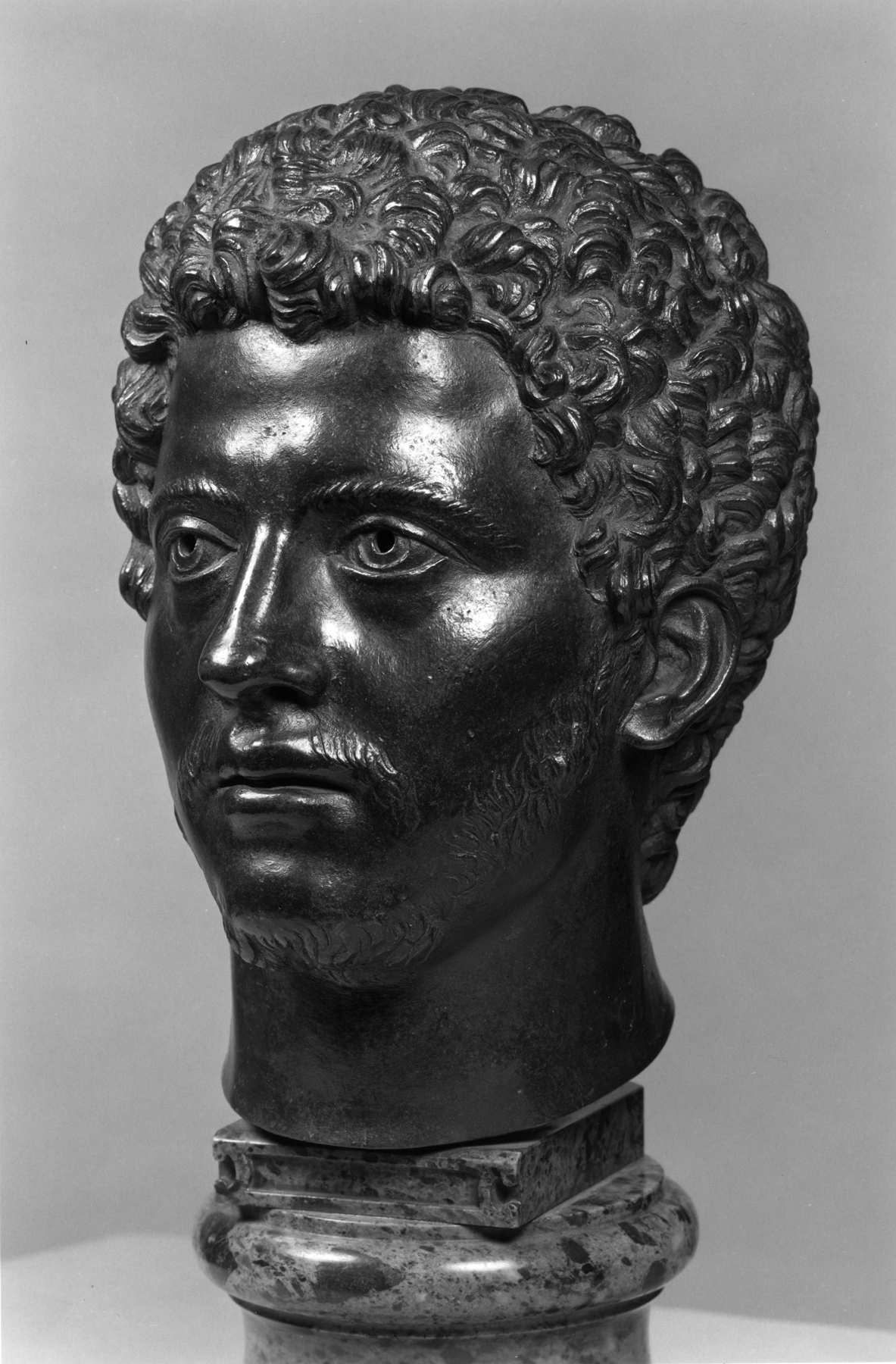Head of the Young Marcus Aurelius (?)
(Renaissance Europe )
Portrait busts and heads of Greek and Roman philosophers and emperors, not necessarily ancient, graced well-rounded collections of antiquities during the 1500s and 1600s. They were kept at hand as inspirational examples of noble, manly virtue. This handsome head is characteristic of the type that was created in the 1500s to respond to the desire of the educated who would have liked to own such portraits but were perhaps not in a position to acquire an ancient example. Aside from its artistry, this head might have been treasured as evoking the emperor and philosopher Marcus Aurelius (reigned 161–80 CE) as a young man. Scholars are not now certain that this head was intended to represent Marcus Aurelius, but in any case it is modeled in subtle, naturalistic detail in the “antique manner.”
During the 16th and 17th centuries in Europe, Marcus Aurelius was greatly admired for trying to live the Greek ideal of the philosopher king, expressed in his "Meditations" on the nature of virtue. The Flemish painter Peter Paul Rubens (1576–1640) owned a bust of him.
Provenance
Provenance (from the French provenir, 'to come from/forth') is the chronology of the ownership, custody, or location of a historical object. Learn more about provenance at the Walters.
Henry Walters, Baltimore, 1916 [mode of acquisition unknown]; Walters Art Museum, 1931, by bequest.
Exhibitions
| 1995 | The Allure of Bronze. The Walters Art Gallery, Baltimore. |
| 1978 | Antiquity in the Renaissance. Smith College Museum of Art, Northampton. |
Conservation
| Date | Description | Narrative |
|---|---|---|
| Examination | Examined for condition; X-ray fluorescence | |
| 3/2/1978 | Treatment | cleaned |
Geographies
Italy (Place of Origin)
Measurements
H: 13 1/4 in. (33.6 cm)
Credit Line
Acquired by Henry Walters, 1916
Location in Museum
Accession Number
In libraries, galleries, museums, and archives, an accession number is a unique identifier assigned to each object in the collection.
In libraries, galleries, museums, and archives, an accession number is a unique identifier assigned to each object in the collection.
27.240


